Open Doors
A parish Opens Doors whenever it takes concrete steps to exercise God’s compassion for people with physical, mental or emotional limitations. In the story of the paralyzed man from the town of Capernaum, Christ demonstrates his desire to welcome and heal all God’s people. He shows a particular interest in providing access to those limited by the cultural barriers and biases of the day.
“Some people came bringing him a paralytic carried by four men, but as the crowd made it impossible to get the man to him, they stripped the roof over the place where Jesus was; and when they had made an opening, they lowered the stretcher on which the paralytic lay. Seeing their faith, Jesus said to the paralytic “My child, your sins are forgiven.” Mark 2:3-7
This is only one of the many stories in the Gospels that illustrates the priority that Jesus places on inclusive community where all are welcome to participate, grow in faith, and serve God’s people. Let us begin the journey together with the tools provided below:
Accessible Parishes
Jesus welcomes all people to life in abundance. The Church extends the same invitation when it overcomes the physical barriers the block people from abundant participation in our Church. Parishes can Open Doors through greater accessibility and use of universal design in physical spaces.
Let us begin the journey together with these tools.
Goal: Identify and publicize parish facilitates that are currently physically accessible to all people. Using a building accessment, we ask parish advocates in conjunction with parish staff, building manager and/or maintenance staff to complete assessments of all parish buildings. Information on willing parishes will be published on this website. We would like to see one parish that is completely accessible in each vicariate. We encourage parishes to host activities at these locations whenever possible. View the report from S.S. Peter and Paul, Williamsville.
Parish accessibility is more than just getting into a church. Consider the restrooms. What if there is a funeral breakfast? Can someone with a wheelchair access the hall, restrooms or school to partake in an activity? Can everyone approach the altar? Are there barriers to serving in a liturgical function at Mass?
Here is a list of parish accessibility by city and county:
Resources to Improve Accessibility
A parish Opens Doors by applying the principles of universal design to building construction and renovations. Universal design is the practice of adapting building elements so that the space can be reasonably be used by all people. It recognizes the diversity of human development, as well as changes brought about by the aging process and variations in health. The intentional effort to design with others in mind, involves both long-term goals and short-term plans of action. Parishes also Open Doors in clusters when they select physical spaces for events that are most accessible. The National Catholic Partnership on Disabilities (NCPD) offers many tools.
Accessibility is more than expensive modifications. It is a new way of thinking using creative alternatives many of which are low cost or no cost. Churches can take simple, effective and inexpensive steps to make the buildings more physically accessible for people with disabilities. St. Stephen Parish in Grand Island and S.S. Columba and Brigid in Buffalo have designed their altar space with a ramped access for people with mobility problems.
Also consult the following resources:
Architectural Modifications – offers guidance on constructing ramps, creating an accessible passenger drop‑off and parking spaces
Accessibility Creativity – offers creative alternatives to increase accessibility
Access Blessing – for use each time that the parish has taken another step toward greater accessibility.
Welcoming People with Disabilities
A parish Opens Doors whenever it follows Jesus’ example in specific and compassionate action toward people with physical, mental or emotional limitations. Welcoming parishes are intentional in communicating accessibility and welcoming all God’s children – all differently-abled.
“Just as the Church must do all in its power to help ensure people with disabilities a secure place in the human community, we it must reach out to welcome gratefully those who seek to participate in the ecclesial community. For most Catholics the community of believers is embodied in the local parish.” – Pastoral Statement of U.S. Bishops on Persons with Disabilities, 1978.
Communicate Accessibility
After assessing accessibility and supportive facilities for people with disabilities, a conscientious parish communicate existing and planned supports through signs, the website, the bulletin and print materials. Post the following at all entrances:
- if hearing assistance is provided, post information indicating what specific devices or technology is available and where to obtain it
- if there is a designated area in the church for seating for persons with mobility disabilities, mark these areas clearly and visibly
- if large print missals are available, this should be communicated by a sign in the entrance with the location of these identified
- include the appropriate access symbols indicating the accommodation for an event in all publicity and on program registration form
In all these ways, people with disabilities feel more comfortable to welcome and sense a sincere welcome, acceptance and accommodation for their participation in the life of the parish. Consider these other resources in your steps to become a welcoming and inclusive community:
Ten Easy Ways to Welcome People with Disabilities
Feeling Comfortable with People with Disabilities
Faith Formation for People with Disabilities in the Southtowns – God’s Family 2 Program


